Oh, the south of Spain. Romantic, vibrant, charming and irresistible. Where does one begin? It’s a fascinating part of the world that integrates European, Islamic and Mediterranean cultures all at once.
Our foray into this amazing corner of the world only lasted four days, but we packed a lot in. One of my favorite stops was the Royal Alcazar (Reales Alcázares de Sevilla). It had all the magic of Moorish architecture and Islamic art, but was so much calmer than the Alhambra in Granada. Every square inch of the Alcazar has been beautifully restored; it drips with detail upon detail unlike anything I’ve seen before.
The Royal Alcazar in Seville is one of the most stunning sites in the charming southern city, and it’s not to be missed. Built in the 11th century by the Moors, the Alcazar boasts columns, arches and walls that are intricately carved and decorated. Because Islamic art never portrays actual people and animals, the ceilings are filled with patterns that look like leaves, flowers and stars.
Upon entering through the gate (Puerta del León), tickets can be purchased. They are not cheap, and if you have a student ID, then use it! You’ll be given a detailed map of the palace.
Built to intimidate… and delight
The facade of the palace is as overwhelming as it looks. Thanks to Aaron’s wide-angle lens, we’re able to appreciate its prominence in this photo! No corner is spared of intricacy and the patterns are so inventive. Ahh!
Once you’re inside the palace, it’s amazing just how large it is. There are so many rooms and indoor-outdoor spaces– bring a sweater if you’re there in the winter– plus a huge garden that covers a good number of blocks in Seville.
The Moors were worldly people. They loved travel and exploration, so many of the materials were sourced from all over the Mediterranean. Just try to count how many different types of stone you see!
Genius aesthetics
The Moors believed that mathematics were a route to draw closer to the divine– and many fractals abound in the Alcazar! We visited a mosaic workshop in Fes, Morocco, and saw how every corner of every tile in the mosaic is oh-so-carefully chipped into shape. Then they are all delicately laid to a perfect fit.
And a brief note on the symmetry of Moorish architecture: it kicked my photography butt! It’s so difficult to get a perfectly framed photograph when there are people, lights, and modern features all around. But here’s what I learned early in our trip: when you photograph something that is perfectly symmetrical, it has to be symmetrical in the frame. If it’s not, it will be so painfully obvious. *wiping sweat off forehead*
The Moors were fans of cooler colors, and many of the carved ceilings still retain a little bit of the glorious blue that once was. I just couldn’t figure out how they got their carpenters up to those high vaults to carve such stunning designs.
It was almost too beautiful for me to remember to put down my camera and simply stand in awe. As we climbed up to the second level, there was more to behold. There’s an entire room filled with huge, detailed rugs hung on the walls– and they have maps on them!
From upstairs, there’s a breathtaking view of the endless gardens below. Romantic balconies and terraces allow for a little reflection and respite before forging on in this beautiful property.
And finally, the garden itself… what a marvel. The water features are quite common (in fact, some are right in the marble floors of the palace so don’t fall in), as the Moors felt it important to integrate flowing water into their homes. I’m not complaining– it’s really cool!
Tips for your Alcazar visit
The Alcazar (website) is pretty self-explanatory. There are no timing restraints, but sometimes you have to wait in (a long) line to enter. In my brief experience, mornings are usually less busy than afternoons.
The Alcazar is located in Seville’s downtown area– right next to the Seville Cathedral. Be sure to give yourself time to wander around this area (if you’re not staying here) before or after your Alcazar visit. I would recommend about 2 hours for the visit; more if you’d like to take lots of photographs without people in them!

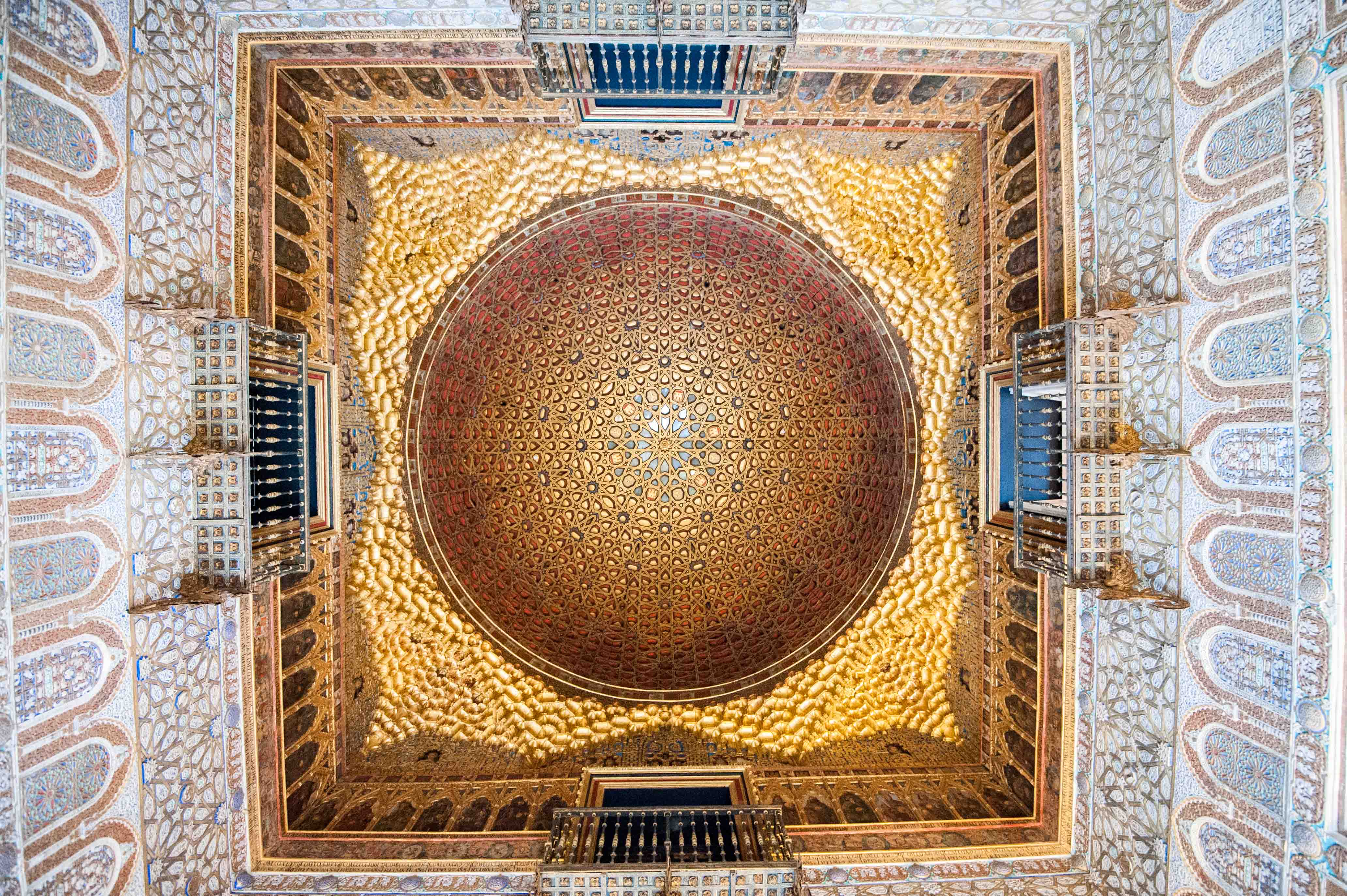
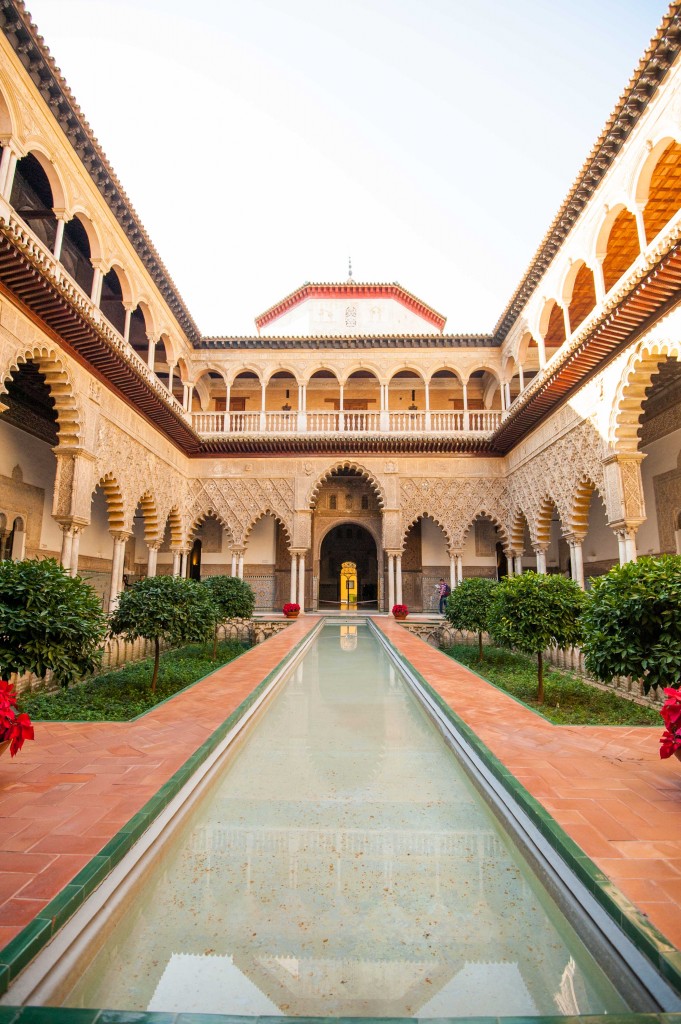
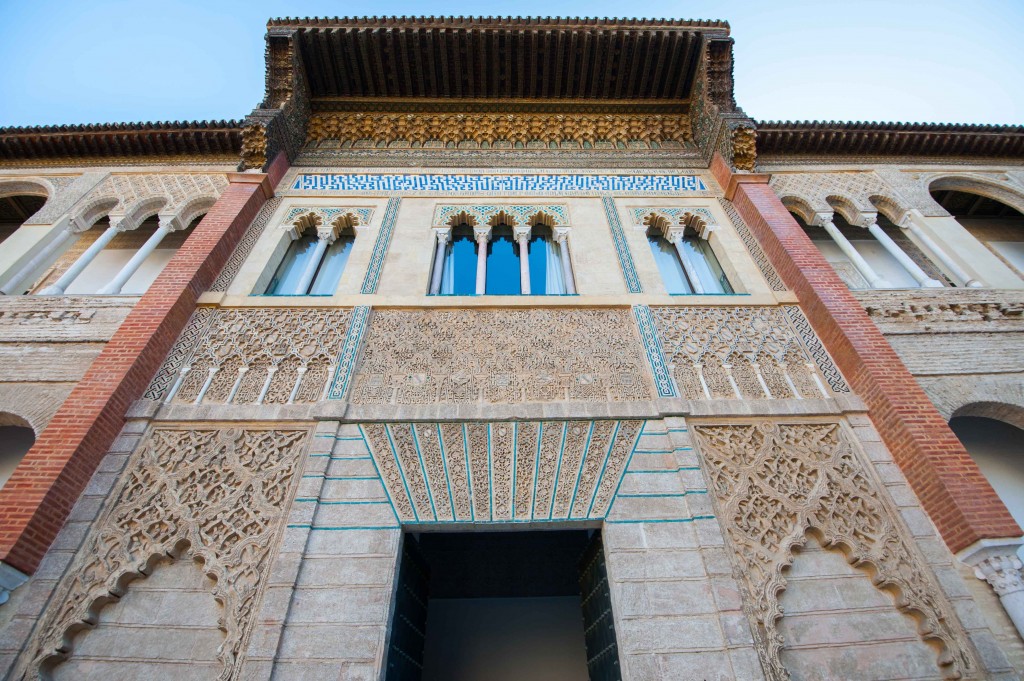
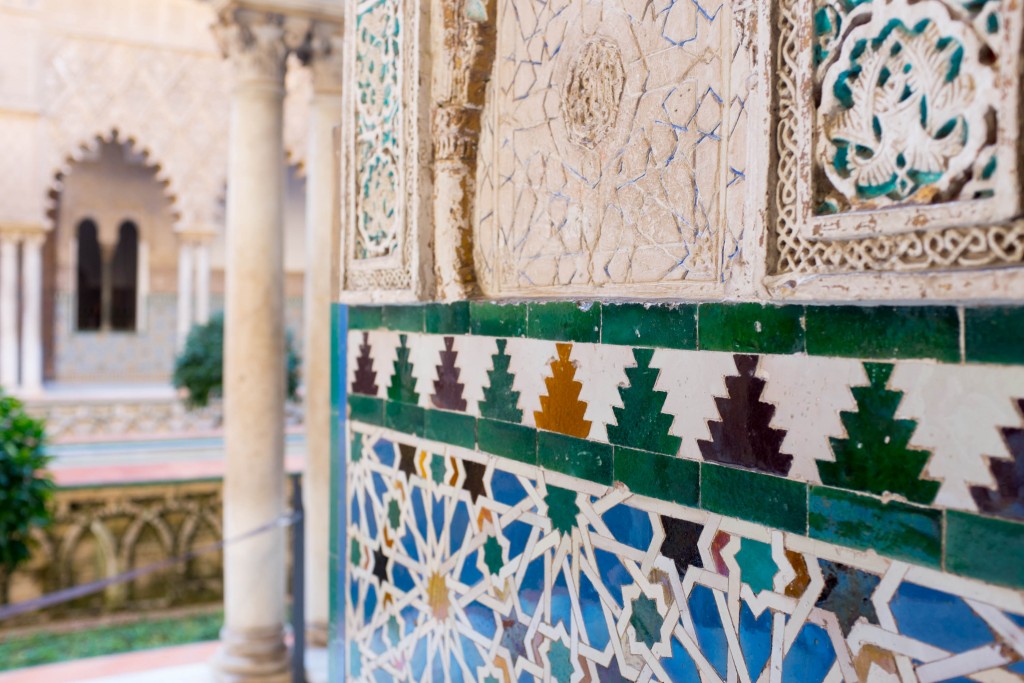
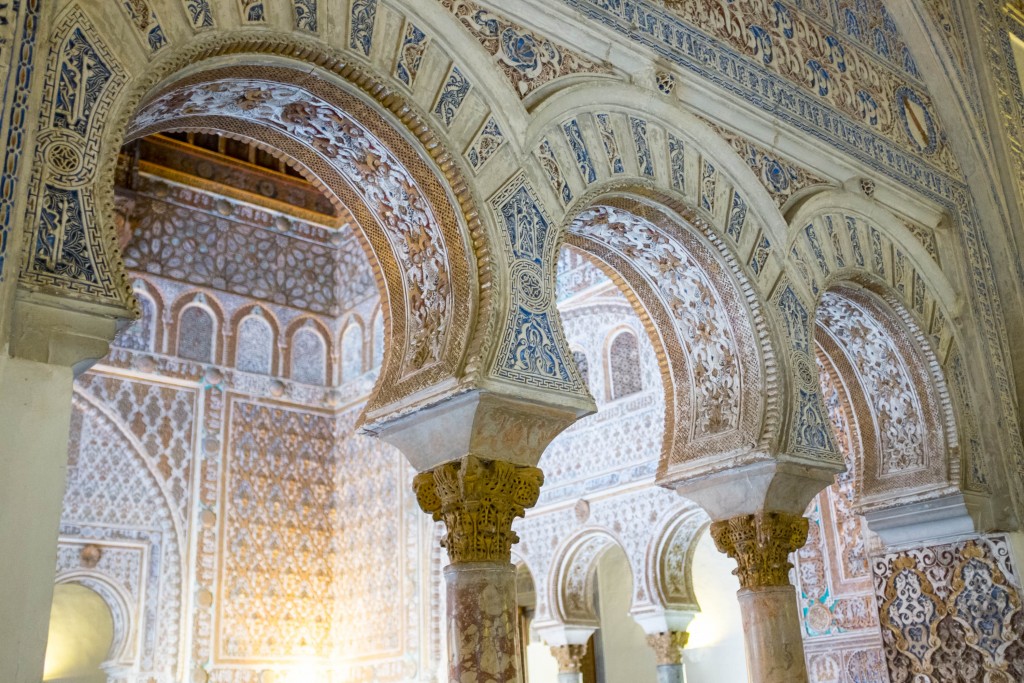
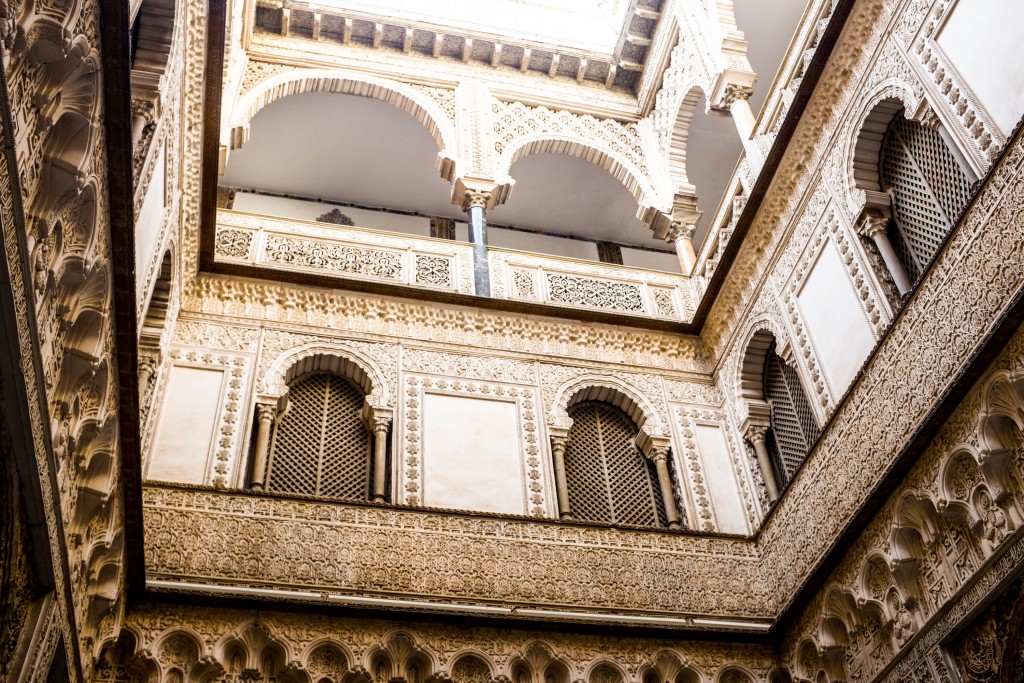
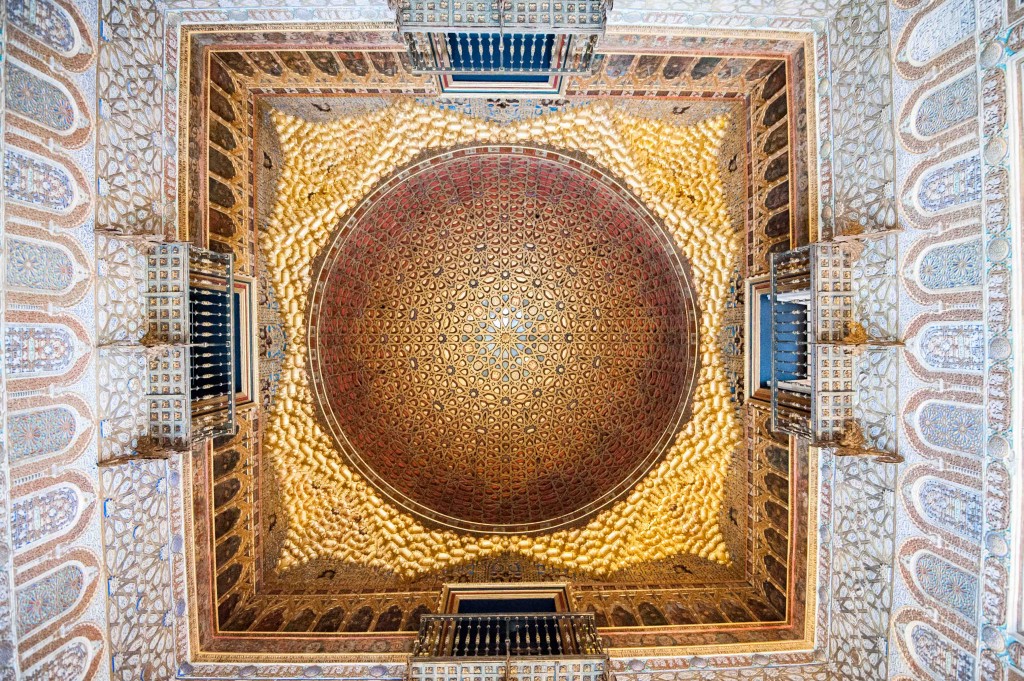
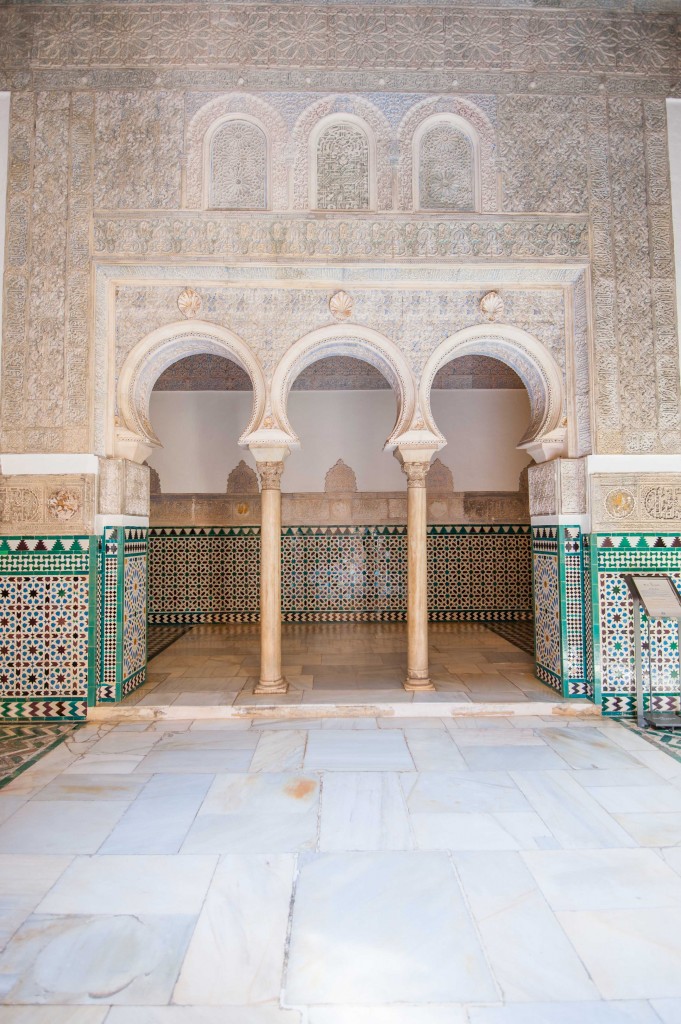
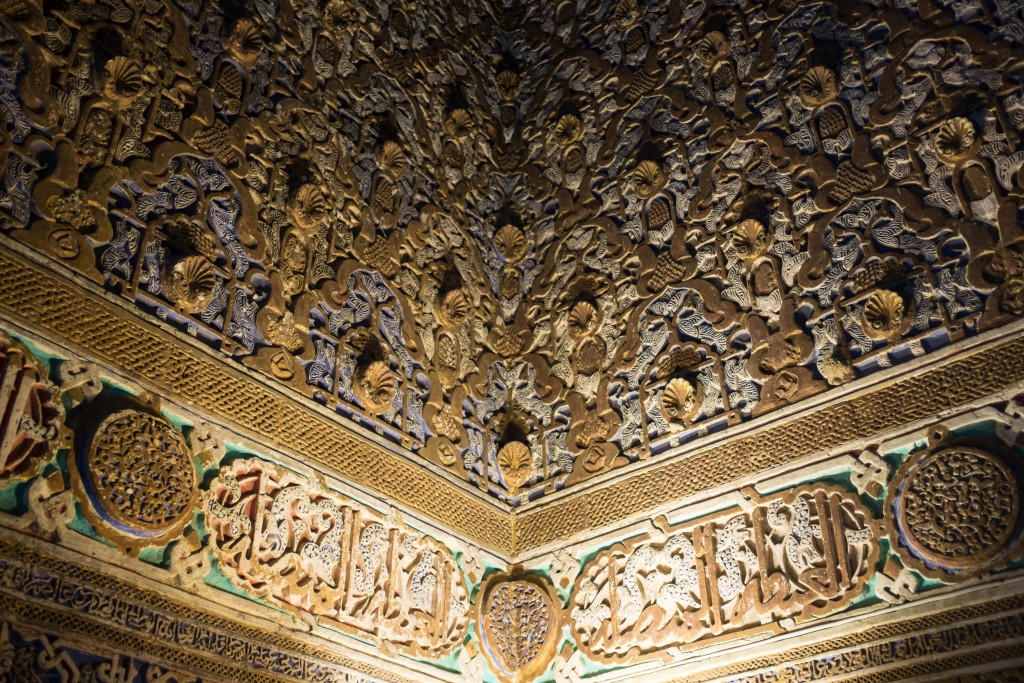
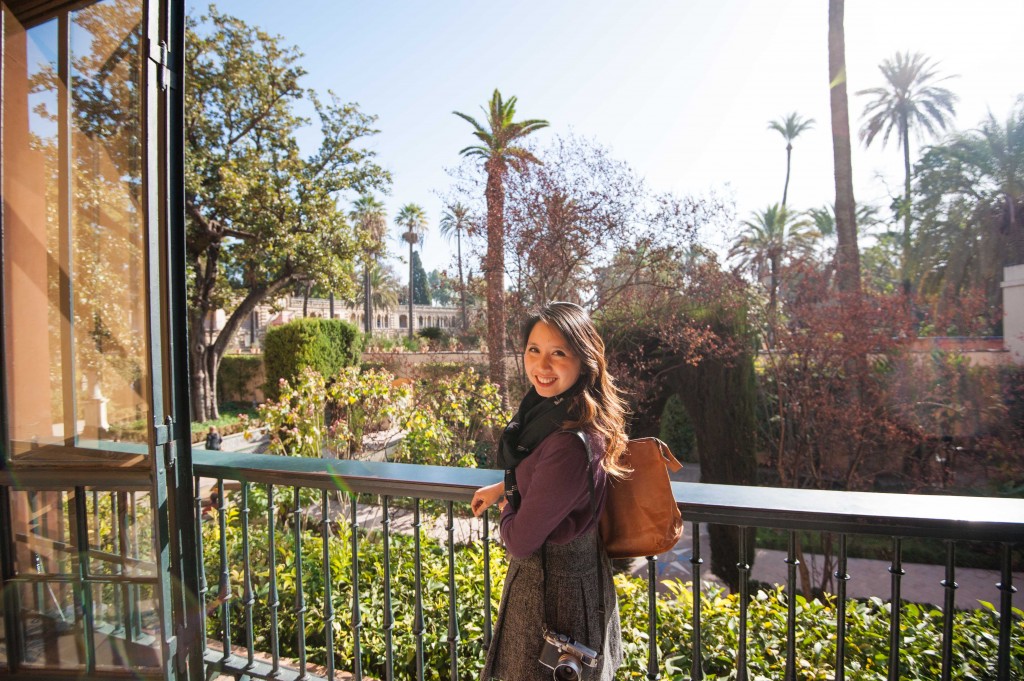
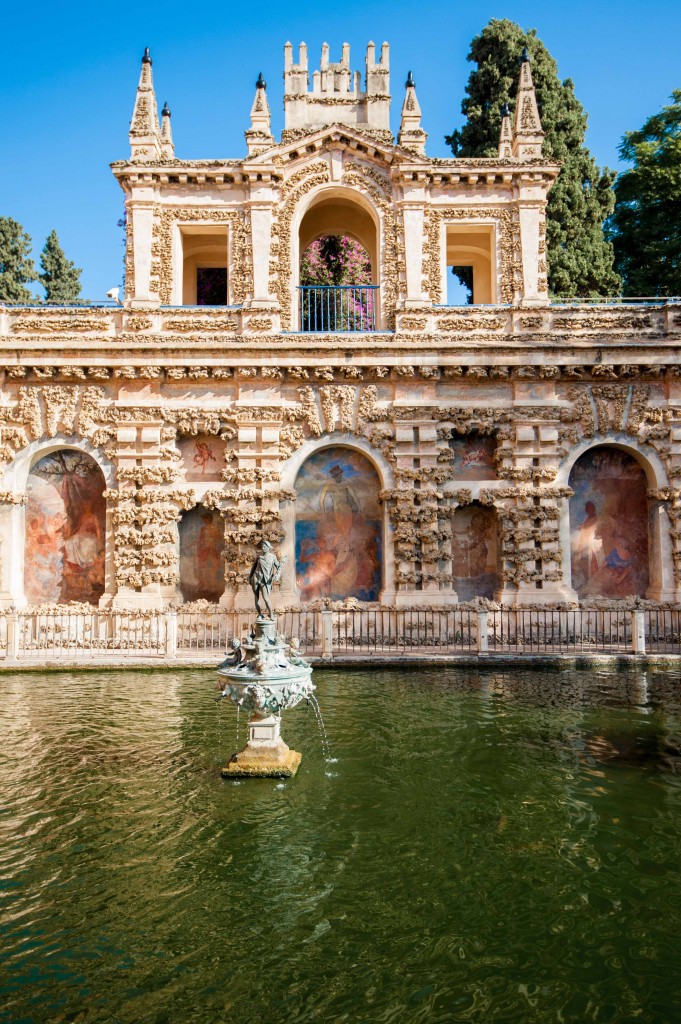
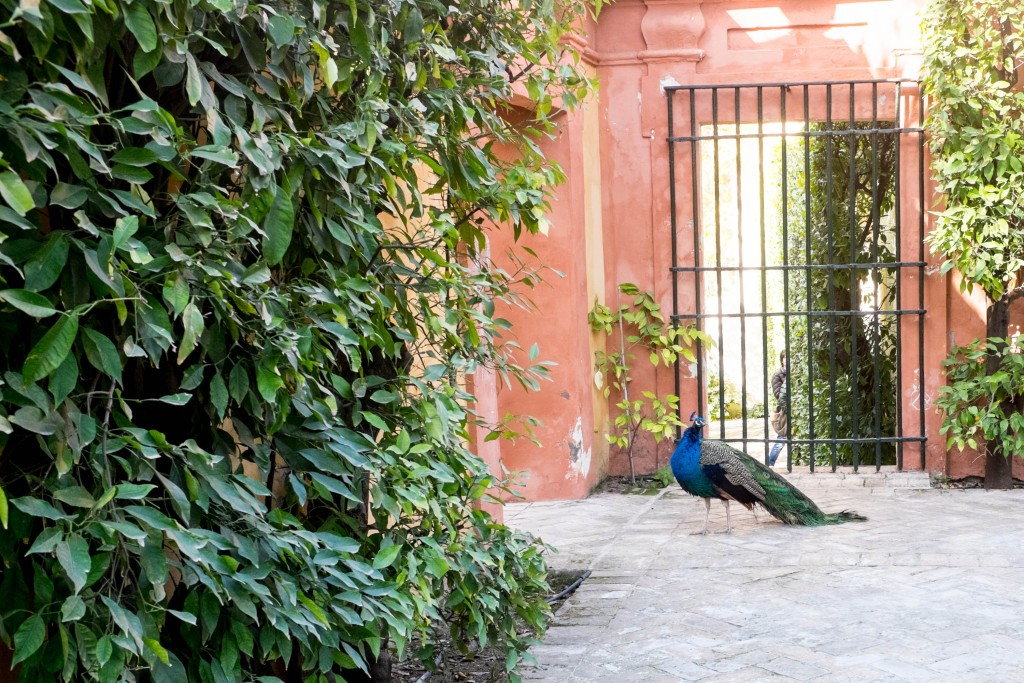
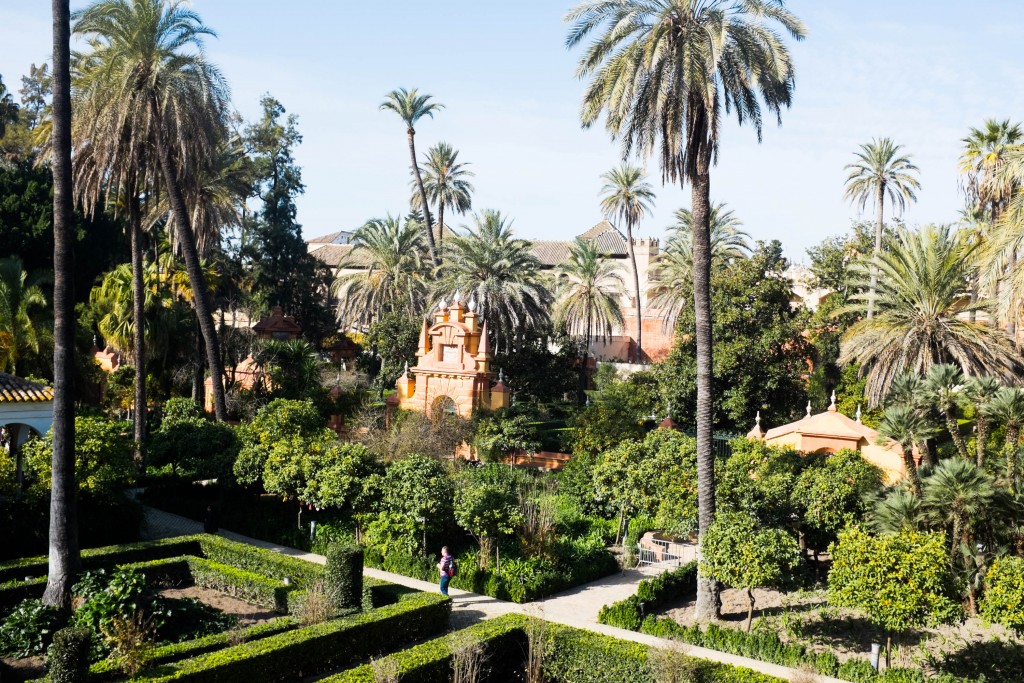
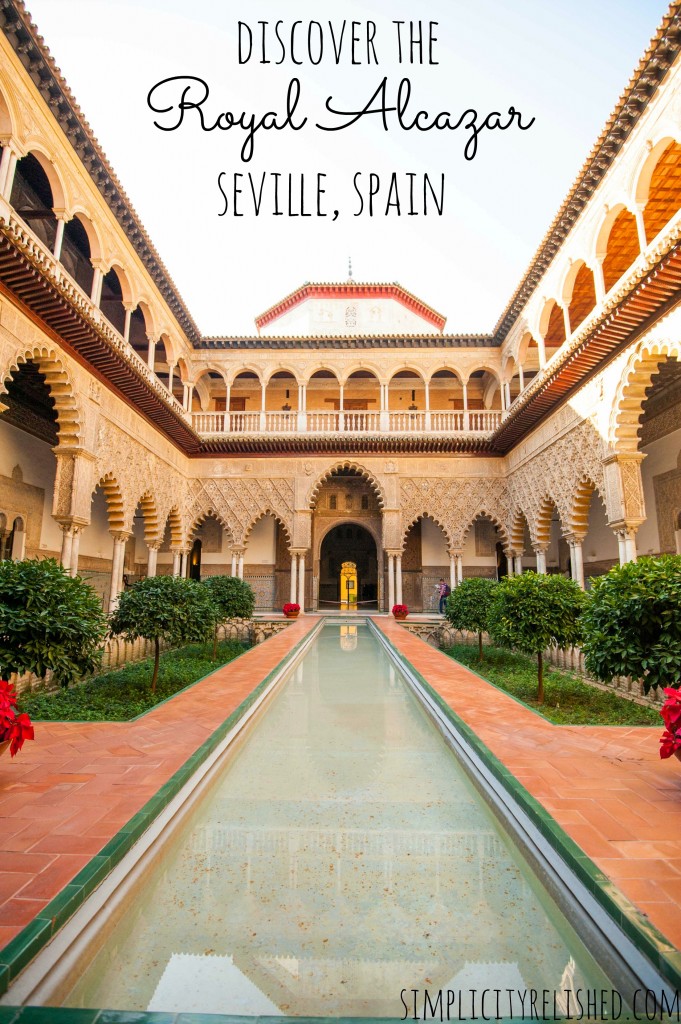
Sorry for the late reply, Mattie! I’m so bummed we didn’t go to Madrid this time! We were in Seville, Granada and Barcelona. I’m definitely planning on going back to Spain. This was my first time but I’m hoping it won’t be my last!:)
I haven’t yet! Mainly because I wasn’t blogging back then and haven’t thought about it! I should though!! Haha But we went to Madrid and Barcelona in addition to Seville – typical tourist destinations I know 😉 but you can’t say you’ve been to Spain without going there! Haha – Madrid was by far my favorite. I loved all the buildings and the history. I had just taken a modern history class in college that had talked about all the wars Spain had been in, so it was super cool to see actual landmarks in Madrid! Where else have you gone??
You would love this place, Emily!
Yes yes yes absolutely!! Breathtaking indeed… to be honest I think the Moorish stuff in Spain is even more impressive than in Morocco (shh don’t tell). 😉
Thank you Lucy! 🙂 It was a blast and I think you would love it!
Ooh that’s so awesome that you’ve been there Mattie! I love comparing notes– where else did you go in Spain? Did you write any blog posts about it?
Oh you should go, Nish! I think you would really enjoy yourself, plus Seville is incredible!
You’re right– the scenes are just awe-inspiring. And haha– the peacocks were a little finicky, but I’m sure you would have succeeded! 😉
Ahhhh thank you friend!! The photos will keep comin’! 😉
Oh China!!!!!! I can’t believe there’s a fake Alcazar; glad it was so well-modeled though that you recognized it immediately. Honestly I think China should open a “top 100 world destinations” theme park and do imitation landmarks and gift shops. Honestly when we were in Morocco, they told us that 90% of the merchandise was made in China anyway!
Ahh you should! It’s not that far from Iceland! 😉
Haha! Admittedly some of these skills belong to Aaron… but a wide-angle lens REALLY helped with all these huge buildings!
Argh – your photos are SO BEAUTIFUL! (I’m jealous of your skills ?) Thank you for sharing! (Oh – and I found Gina’s post about Seville super helpful when I was there too!)
So gorgeous, those details are amazing. Your pictures alone have me wanting to book a trip!
Stunning! Funny thing is, this building is one of those recreated in miniature at this funny theme park we went to in China that had miniature versions of landmarks and buildings from all over the world. The park had very little signage, so I didn’t actually know what it was at the time, but I recognized it immediately from your first photo of the hall! Oh China. You guys got amazing shots!
Another BEAUTIFUL adventure, Daisy! I am so glad you are able to photograph and share these with us! 🙂
I feel like if I were to see this in real life I’d be incredibly emotional. So beautiful. So much time was put into this architecture. It’s refreshing in today’s world since everyone is in such a big hurry. Oh, and I totally would have attempted to touch the peacock. (;
Absolutely stunning! Definitely on my list of places to see this year!
Wasn’t it so beautiful?!?! Just beautiful color + history everywhere! Definitely one of my favorite places I’ve traveled!
These pictures are amazing and make me want to visit! It’s so beautiful!
Isn’t the Alcazar simply one of the most beautiful places you could imagine? I remember being so in awe of the entire structure that I thought I might never visit another place that would take my breath away as much! I’m definitely glad that you enjoyed it just as much as I did! 🙂 I’m excited to read more about your winter trip already!
Breathtaking! I would spend hours here taking it all in. I’m a sucker for history and beautiful architecture.